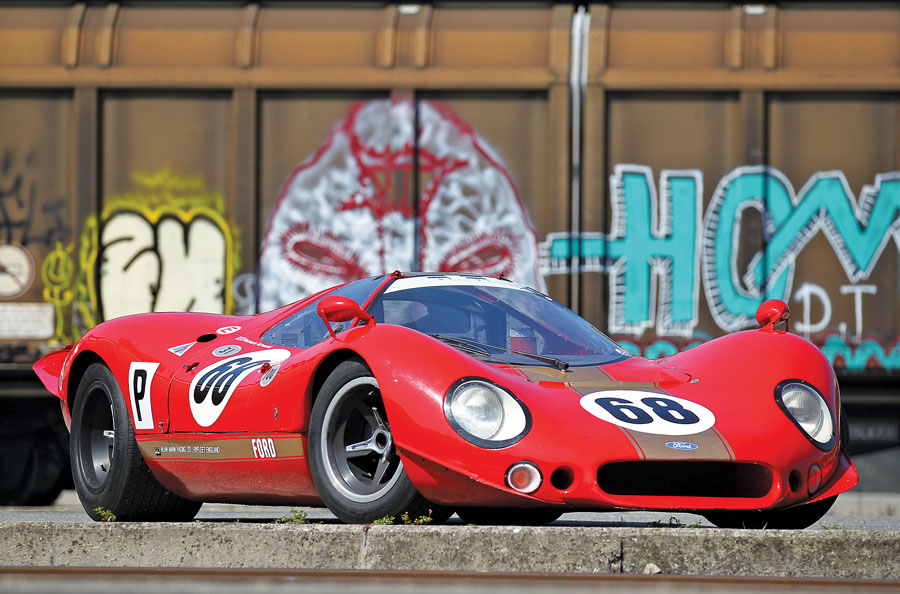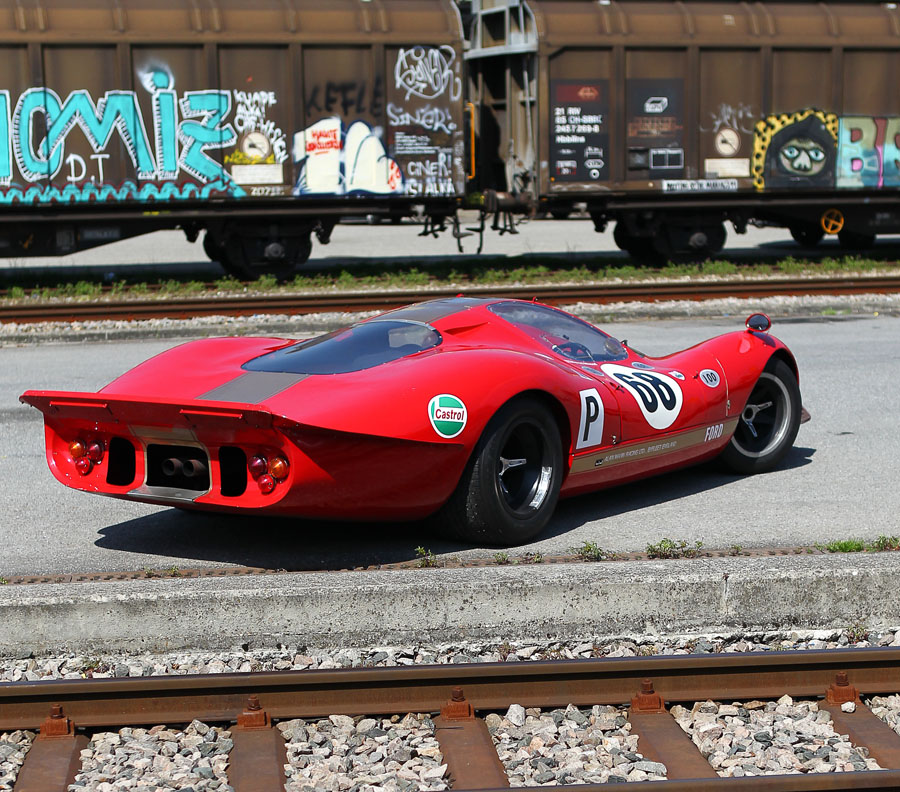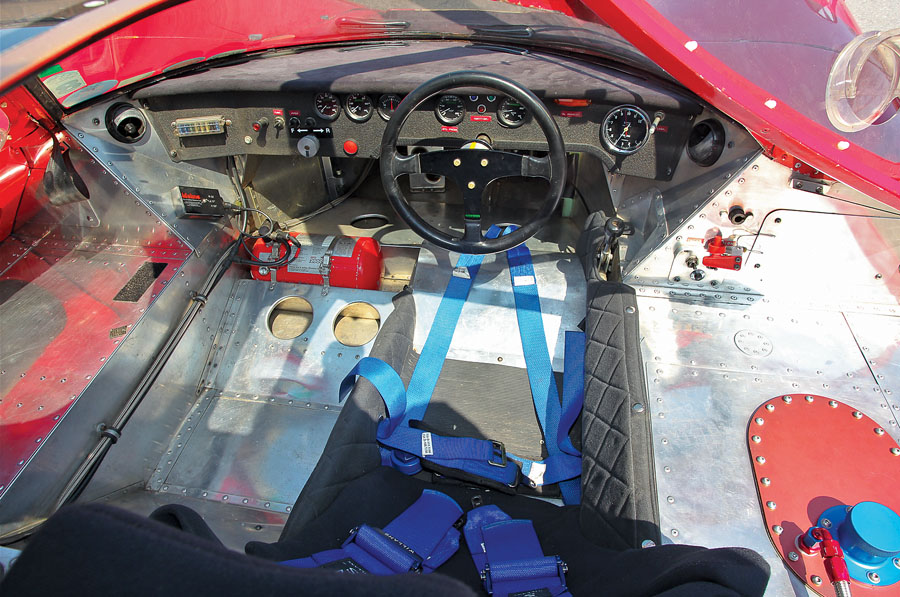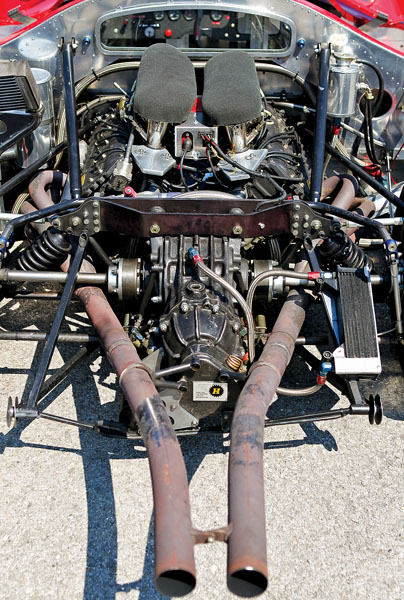SCM Analysis
Detailing
| Vehicle: | 1968–69-Type Ford P68 “F3L” Group 6 Racer |
| Years Produced: | 1968 |
| Number Produced: | Three |
| SCM Valuation: | $672,026 |
| Engine Number Location: | Top rear of block above flywheel |
| Club Info: | Federation Internationale de l’Automobile (FIA) |
| Website: | http://www.fia.com |
| Alternatives: | 1968 Porsche 908, 1969 Mirage M3, 1968 Matra M 630 |
| Investment Grade: | C |
This car, Lot 229, sold for $665,805, including buyer’s premium, at Bonhams’ Goodwood Revival sale in Chichester, U.K., on September 8, 2018.
The most important point that needs to be made as we open this discussion is that the subject car is not a 1968 or 1969 Ford P68 “F3L” as built and raced by Alan Mann in period.
It looks like one and even legitimately wears the Alan Mann livery, having passed through his ownership in its history, but it is not original.
This car was built by David Piper from scratch in the early 2000s, roughly 35 years after the fact, incorporating at most a small fraction of original body parts, and differs significantly from the specifications of the original cars.
The most significant difference is that apparently this car actually works and is competitive as a racing car, while the original versions most emphatically were not. If the buyer’s intent is to race the car in historic events, this presents a most serious issue.
Beautiful and terrifying
The P68 was conceived and built as a result of the FIA having instituted new rules for the premier “Prototype” class of endurance-racing cars beginning in 1968. The old rules allowed virtually unlimited-displacement engines, while the new limited it to 3 liters. Having made its point by roundly defeating Ferrari at Le Mans in 1966 and 1967, Ford chose this moment to depart from international racing, leaving the two British surrogate factory teams, Alan Mann Racing and John Wyer Automotive, more or less on their own.
The Alan Mann team was associated with Ford of England and Lotus, and as a result had access to the new Cosworth DFV Formula One engine that had taken the racing world by storm in 1967.
Utilizing the DFV and much of the Lotus 49 suspension design, Mann created the new car with an obsession about keeping aerodynamic drag as low as possible to allow the 3-liter engine to go as fast as the 5- and 7-liter racers of previous years. Aerodynamicist Len Bailey managed to design a body shape with only 14 square feet of frontal area and a drag coefficient of just 0.27, allowing a top speed comfortably over 200 mph. The new design was both exciting and hauntingly beautiful.
Unfortunately, the design was also a complete catastrophe as a racer. Although the design had tried to incorporate downforce, it only managed to do so on the front wheels, while the back got virtually nothing. The result was that the faster the car went, the more horribly it handled. Driver Frank Gardner refused to give a ride to journalist Denis Jenkinson at a test day, saying he was reluctantly willing to risk his own life, but not prepared to risk someone else’s. It was that bad.
Shapely undoing
The aerodynamic instability was compounded by numerous teething problems — related to both a new design and the first enclosed use of the DFV engine — that made the P68 unreliable. But the fundamental issue was that the gorgeous shape was its own undoing.
Attempts were made to resolve the handling issues; various wings and spoilers were tried, but they never worked well enough. In the end, the Alan Mann team didn’t have the resources to fix such fundamental problems, and partway through the 1969 season, they gave up, stripping the engines and suspension off the two remaining cars (the third was destroyed at Nürburgring) and stuffing the carcasses in the corner of a warehouse.
Though there were flashes of brilliance in a few fast qualifying laps, no P68 ever finished a race, much less placed or won. It was an abject failure.
Lord, though, was it gorgeous! From its first introduction, it was one of those cars that made everybody cheer and imagine how wondrous it must truly be, so when it failed so miserably, the disappointment was palpable.
It was thus understandable, if not maybe predictable, that 35 years later, with historic racing ascendant — particularly in regard to the legendary endurance racers of the late 1960s and early 1970s — someone would decide to revisit the P68 concept and build another one. Both of the original cars had been reassembled, but with their flaws intact, they were relegated to museum collections. So why not build the car that it could have been? That appears to be exactly what happened.
Building it better
Although this car looks like an original P68, it differs in important ways: The wheelbase is 2.5 inches longer, the chassis is a full monocoque, the engine is a stressed chassis member instead of sitting inside a frame structure, and the body is fiberglass instead of the original aluminum and has a substantially different shape at the rear to get downforce on the wheels. It looks to be a fabulous car, but more of an homage than a replica. And apparently it works very well.
However, in order to ensure that historic racing is done with cars that are real or at least completely correct for when they were raced, the FIA requires that any car entered must have a Historic Technical Passport (HTP) that effectively certifies that a car is exactly what it is supposed to be, in great technical detail. Replicas are allowed, but they have to be exactly correct to the original as raced. In short, without HTP, you can’t race the car in serious international events.
You can see how this creates a problem for our subject car, which is miles from original. The issue is complicated by the fact that the catalog copy clearly states that it comes with “current HTP,” even though this seems highly questionable.
Bonhams is an extremely reputable and upstanding operation, so there is little reason to doubt that they stated correctly, but where did the papers come from? My friends inside the FIA have checked and established that it got an HTP in 2009, but those have expired, and that a renewal was rejected in 2016. Nobody seems to know anything more.
This has a huge impact on the value of the car as a historic racer, but since I don’t know who bought the car or why, I can’t speculate as to whether this matters. It may be that the car was purchased as a collection piece with a full understanding of the issues, in which case it probably was a rational buy.
The price was certainly cheap enough — the components alone are worth over half of the hammer price. Equivalent “real” cars sell for multiples of this sale, so maybe the reality is reflected in the price.
I would suggest this was either fairly bought or very well sold, depending on what the buyer knew and expected when the paddle was raised. ♦
(Introductory description courtesy of Bonhams.)



